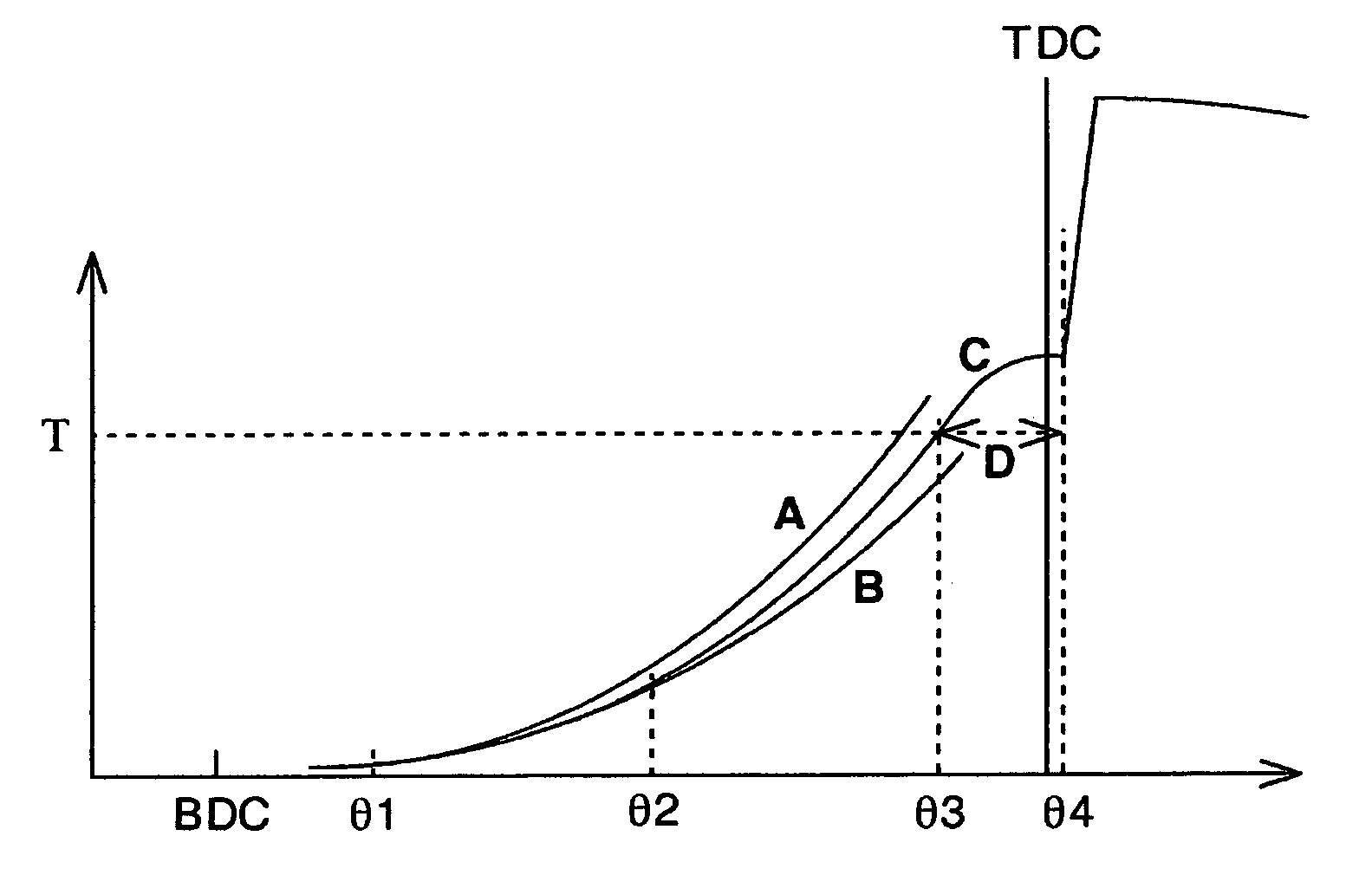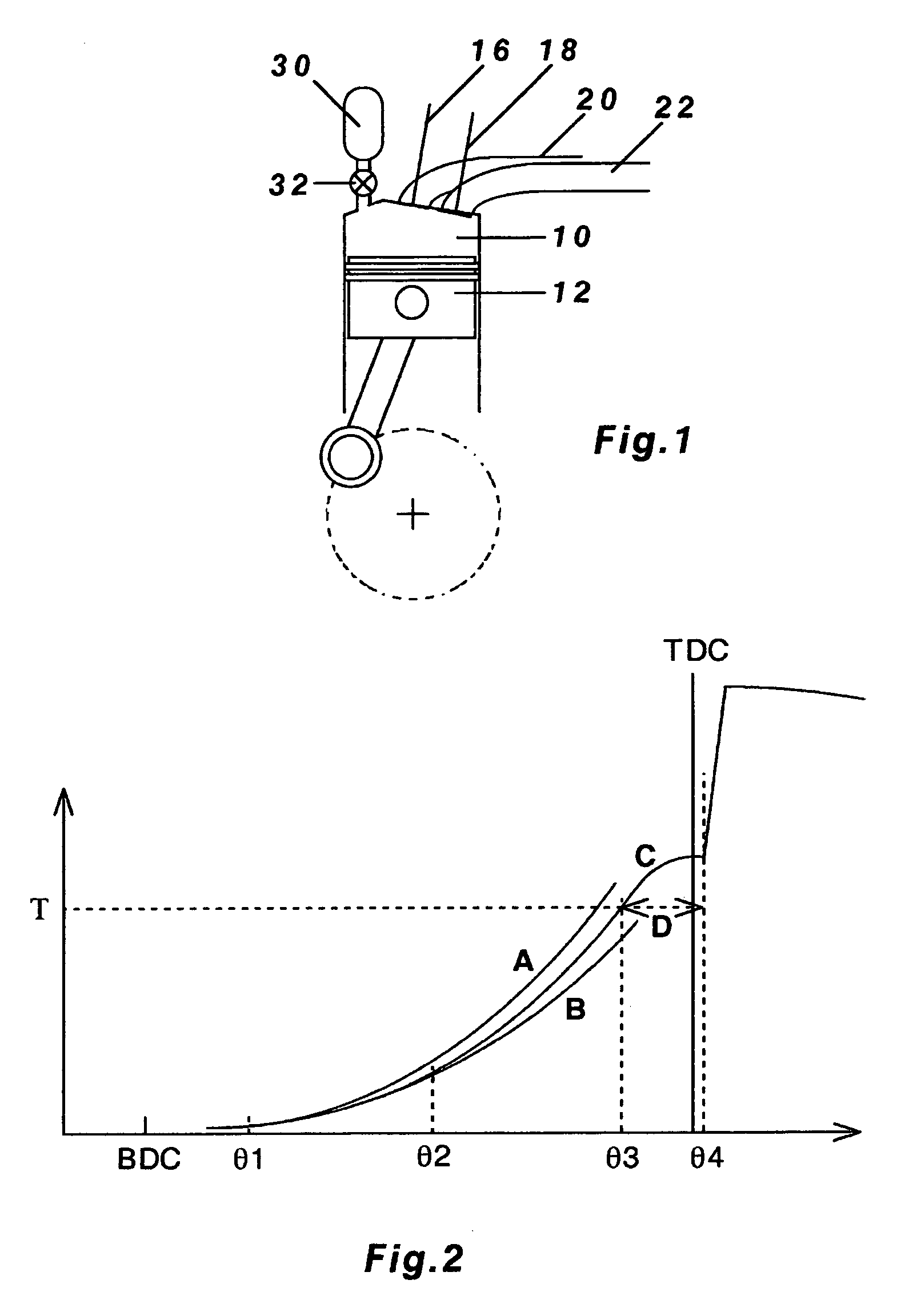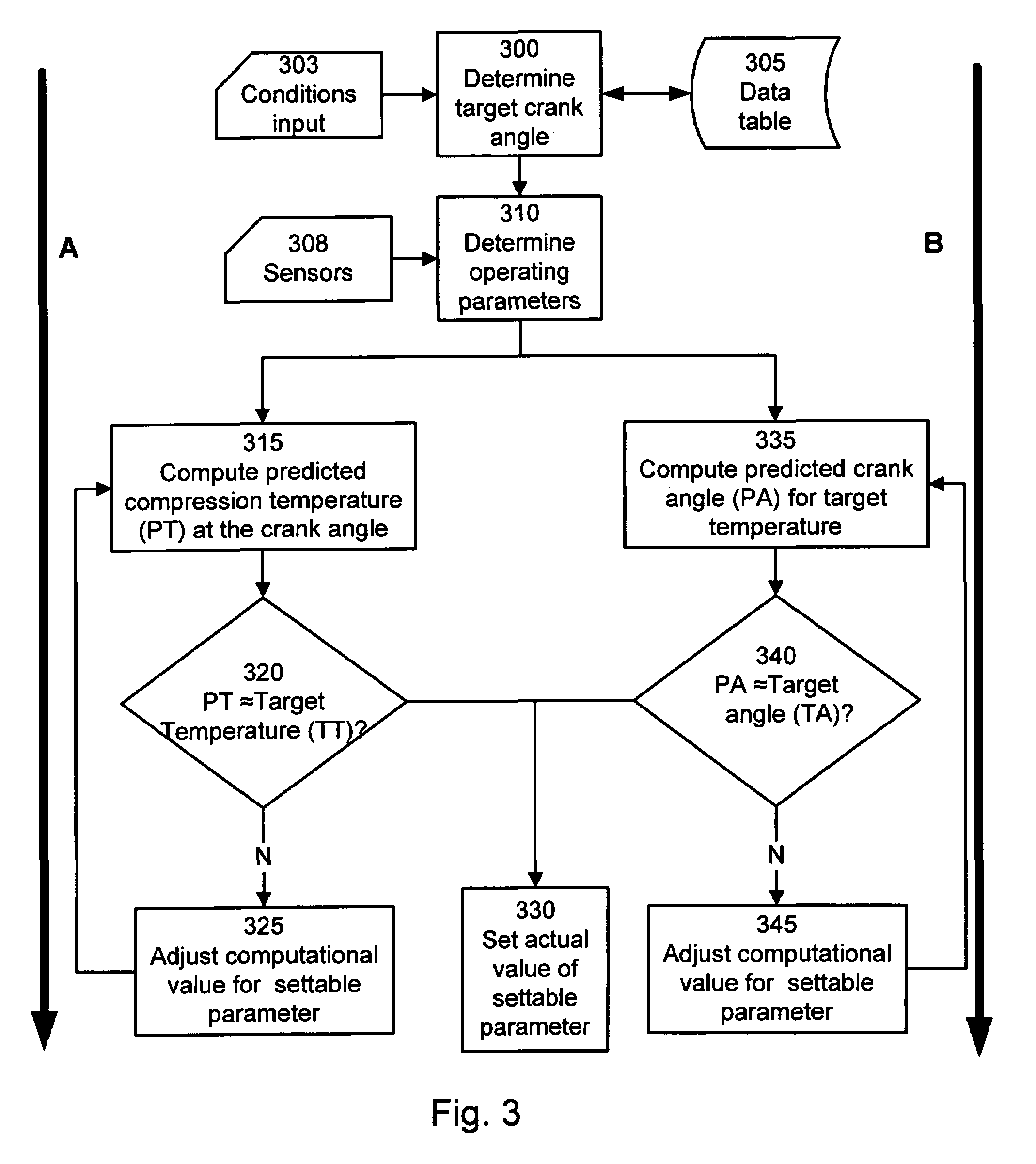[0013]In calculating the compression temperature trajectory of the cylinder charge with time, the initial and boundary conditions of the cylinder charge and the interim heat exchange processes preferably include engine speed and load, engine effective
compression ratio, fuel composition, fuel / air mixture ratio,
fuel injection and
evaporation, intake charge quantity and temperature,
coolant temperature, EGR quantity and temperature,
residual charge quantity and temperature, each measured or inferred using appropriate sensors. This will be based on
computer modelling of the thermodynamic processes influencing the compression temperature of the charge during the compression
stroke and take into account all the interactions of the initial and boundary
control parameters according to thermodynamic laws, thus capturing the effects of all these parameters in a unified manner in a characteristic compression temperature trajectory. In this way, the calibration process could be simplified to a small number of in-cycle characteristic parameters which are much closer to the ignition event than the myriad of
control parameters at the initial condition, and can be readily adapted for use in a
high level control map explicitly for auto-ignition timing. This would bypass the traditional method of calibrating each of the engine operating parameters at the initial and boundary conditions separately in a myriad of multi-layer multi-dimensional calibration maps, and thus reduce the calibration effort to a manageable level.
[0015]Thus according to the preferred method of the present invention where the effective
compression ratio of the engine is one of the prescribed engine operating parameters, in order to determine and set the effective
compression ratio to achieve the said target auto-ignition timing according to the said predetermined auto-ignition timing calibration map (or look-up table), two or more effective compression ratio setting values are used for calculating for each setting value the associated compression temperature trajectory, and the best setting value is found iteratively by interpolation or extrapolation between the said calculated trajectories that would produce a compression temperature trajectory reaching the said target temperature at the said target reference timing associated with the said target auto-ignition timing. In this way, a precise command setting of the compression ratio could be defined that would directly trigger a predictable and precise auto-ignition timing according to the said predetermined auto-ignition timing map.
[0017]As a further refinement while the invention is in use, a sensor measuring the start of combustion (start of rapid heat release) may be additionally provided for validating and if necessary adjusting the calibrated value of the above defined
delay duration, thereby adaptively improving gradually with time the control accuracy of the auto-ignition timing in future operations.
[0019]It would be clear from the above that a small change in the target auto-ignition timing does not always imply a small unidirectional change in the compression ratio of the engine. In fact, the correlation could be non-linear and strongly influenced by the many parameters mentioned earlier in addition to the compression ratio, so that the required change in the final command setting of the compression ratio can only be determined by iterative calculations, taking into account the effects of many other engine operating parameters prevailing at the time including air charge temperature, fuel
evaporation temperature,
coolant temperature, residuals gas temperature,
air fuel ratio, residuals quantity etc, all affecting the compression temperature trajectory. This is especially influential when the engine is being switched from the conventional SI or CI mode to the CAI / HCCI mode which may take place under a wide variety of engine operating conditions prevailing at the time of switching, for which the auto-ignition timing control method of the present invention ideally arrive at the correct optimum compression ratio setting immediately and explicitly for the first switched cycle to CAI / HCCI mode without misfire or knock.
[0021]In contrast, the auto-ignition timing control method of the present invention relies on high speed calculation prior to the combustion to arrive iteratively at an ignition conditioning parameter, namely, a target temperature occurring at a target reference timing, that will produce the desired auto-ignition timing for each stand-alone cycle before ignition actually happens. Such predictive approach is an
improved method that can produce the correct auto-ignition timing to initiate the very first switched cycle to CAI / HCCI under any engine operating condition prevailing at the time of switching, and continue with the same control for each and every subsequent cycle without relying on any combustion feedback data being available.
 Login to View More
Login to View More  Login to View More
Login to View More 


